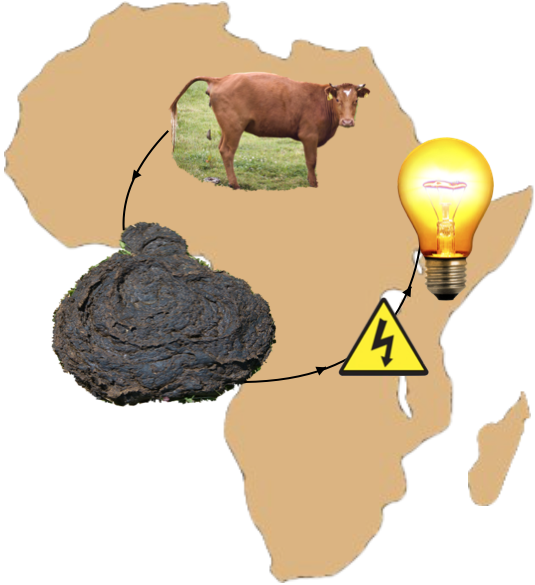There are some really sh*t ways to produce fuel! Sucking it out of the earth in the form of oil or gas is causing is putting enormous strain on your climate, with records weather records broken every year and melt at the polar caps increasing in speed. But some sh*t methods are actually good! (But maybe a little smelly)
In Gauteng, which is not far from Johannesburg and Pretoria in South Africa, cows are currency. Herds of cattle, waiting to become streak and beef and beef burgers, populate the green pastures. A lot of grazing cows means, a lot of cow pats (dung)! And therein comes the innovation.

The dung from the cows, 120 tonnes a day, is mixed with 60 tons of paper, yoghurt, fruit and abattoir waste by Bio2Watt. This steaming pile of dung is broken down by bacteria which produce methane, which powers an engine, which in turn produces 4.4 Megawatts of electricity. This amount is enough to power a village of 1500 people.
South Africa have been suffering from an energy crisis in recent years, and ageing power infrastructure is not helping. The system created by Bio2Watt provides a decentralised solution that can be created anywhere there is access to the raw materials.
In this case, as well as providing electricity for the cow farmer next door, who was not able to expand his business because of power restraints, Bio2Watt deliver their power to BMW, who’s policy is to purchase 100% renewable energy for all of their plants. The power from Bio2Watt has enabled BMW’s Rosslyn plant to cover 30% of their energy with the biogas.
This isn’t the first way in which cows are at the centre of South African innovation. If you want to invest in cows, but don’t have a massive area of land to do so, check out this blog! #Cowfunding
Coal from waste products
With 4 million cattle wondering the South African pastures, the potential for this technology is huge. Renewable energy from solar, wind and hydro are of course at the forefront of investments, and energy news, but this technology is making a raw material out of a waste product, enhancing the circular economy.
Cameroon are also embracing the circular economy and using waste products to create energy to cook. Using the skins from bananas and sugar cane, as well corn husks and other by products from agriculture, Kemit Ecology creates coal. The waste is collected, dried, burned with limited amounts of oxygen, which produces coal dust, which can then be packed tightly into briquettes.

Burning these briquettes, to cook over, produces less CO2 than traditional charcoal production. It is also a much cheaper form of energy for communities that usual spend €0.90 to cook one meal. They can now spend just €0.75 for three days worth of meals. This not only saves money for individuals, but hotels and bakeries around the area.

Africa as a continent is already seeing the effects of climate change. Whilst the continent needs to develop, there is a global clamour to keep fossil energy usage down. Embracing renewables and the circular economy is one way in which to gain power without adding fossil carbon to the atmosphere. It is likely that many communities already use innovative methods to fuel their lives. Over the coming years, it is likely that many of those methods are scaled up, contributing to Africa’s energy needs.
If you know of any other energy creating innovations in Africa or an innovation that is changing lives, or you want to be a guest blogger, get in contact with us on Twitter @InventiveAfrica or via email, and please share the blog with your network on Twitter and Facebook. Also, we have a new Facebook page! Please like it, and carry on the dialogue about African Innovation there!


2 thoughts on “Did You Know cows are creating electricity?”